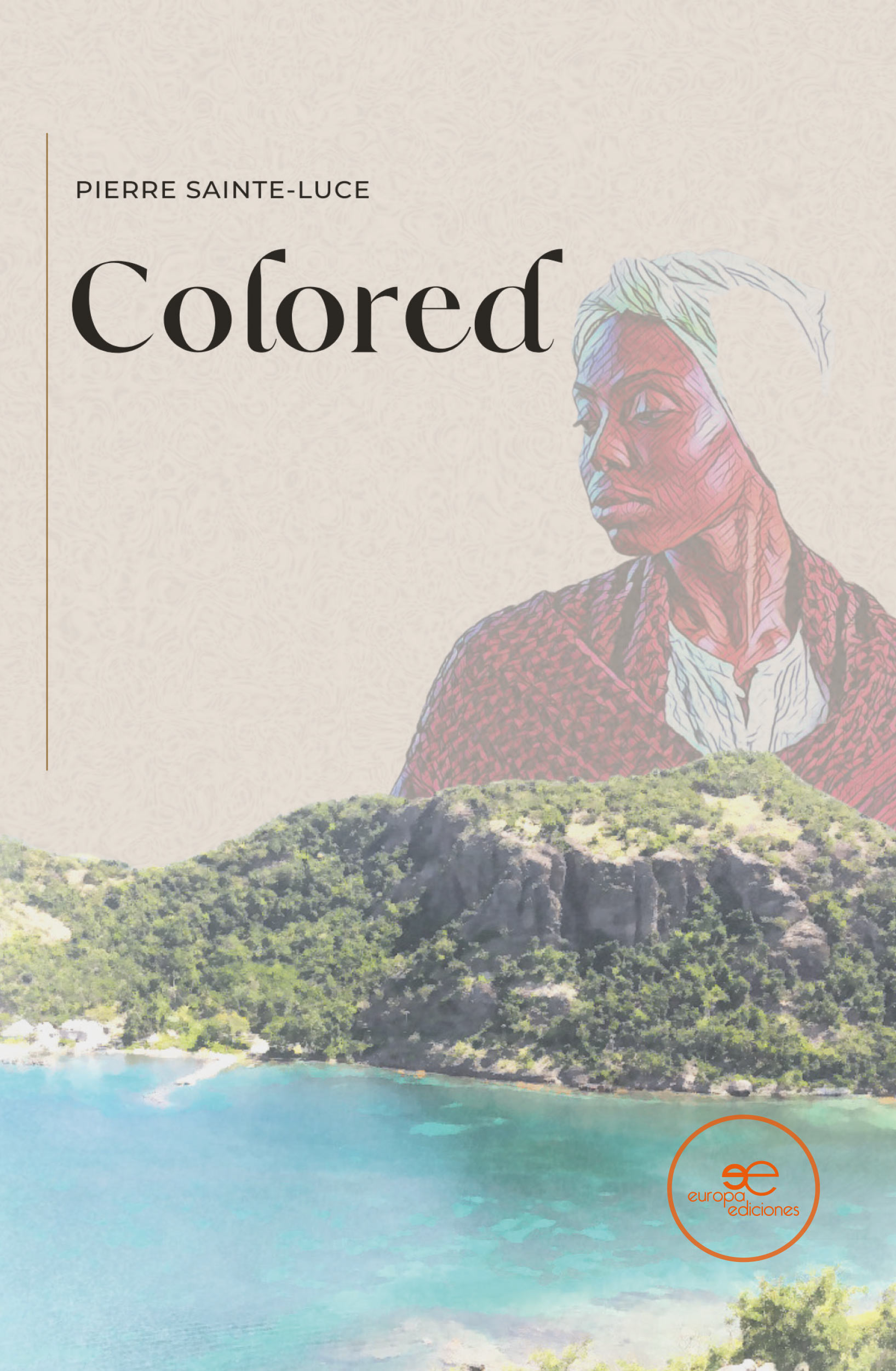Today we talk about Colored, a book by Pierre Sainte-Luce published with our publishing house Europe Books.
Europe Books had the pleasure of interviewing the author Pierre Sainte-Luce to get to know him better, the characteristics his audience should have to appreciate his book Colored, as well as how he would describe his writing style.
Below you can find our interview. Take a seat and enjoy your reading!!!
- Is there a particular moment in your life that led you to the writing of your book? What was that?
I had the pleasure of visiting the Memorial Acte, the museum in Guadeloupe dedicated to the memory of slavery. In this museum, there is a genealogical research space that allows you to find your ancestors. My research was vain and I did not find any trace of my African ancestors. At the same time in Paris, the CM98 association, through the Atelier de Généalogie et d’Histoires des Familles Antillaises (AGHFA), has allowed thousands of West Indians to find their ancestry, whether they were slaves, free people of color, Indian immigrants or Africans who arrived after the abolition of slavery. I transformed my sadness into a hymn of joy, I created my ancestor Elsa to whom I gave life through the writing of the book Colored. Writing and inventing the story of Elsa was a way to accept that there would be no answer. But it is also a gift to my children and my grandchildren. Now, we have Elsa who was a teenager when she was snatched from her family. Making her a mid-wife and a herb-connoisseur was a way to have a strong link with me, as I am a doctor myself.
- What characteristics your audience should have to appreciate your book?
My book is a universal story, inspiring to all audiences who should relate to it as it tells that as human beings, we have the ability to adapt to the worst situations. To the West Indians who wish to know their history, to the Africans who seek to know the link that connects them to the Americas, to all those in French society who are interested in the origins of diversity. It is a book that deals with humanity without borders and fraternity, values shared in the world regardless of ethnic or religious origins.
- What messages did you want to convey with your book?
The evocative title, colored, comes from my stay in South Africa. In this country, people of mixed race are “colored”. Their diversity of cultures has created their human richness The title of the book thus evokes our Creole culture due to centuries of mixing races and cultures. We, as West-Indians are Creole. Other authors such as Glissant, Chamoiseau, Confiant, Bernabé have sanctuarized the creolization of the world, the whole world. I believe in a Creole world and my aim is to shed light on our future of harmony and the evolution of a mixed society.
- How would you describe your writing style?
It is a historical novel that mixes reality and fiction. It is a simple and straightforward writing style. I started writing after 60, because I had stories to tell, so I use plain sentences because I do not pretend to be a poet. I am an entrepreneur and a doctor, I have learnt to be efficient for results, I apply the same to writing. My ancestor Elsa, whom I sublime in the novel, was born in 1685. Elsa met personalities who existed: the governor of Guadeloupe in 1728, Robert Giraud du Poyet and Joseph Bologne who will become the famous musician the Chevalier de St Georges. Elsa was 60 years old when she tended to the birth of slave Nanon’s only son with the Master, Sieur Bologne. It was her last childbirth. Nanon drove the child prodigy regularly to visit Elsa, her midwife. It is in memory of Elsa that in Paris in 1780, the famous musician, the Chevalier de Saint Georges wrote the beautiful concerto symphony in G major.
- Are you working on a new writing project?
I also published more recently “Transfiguration” a novel/essay that offers keys to understanding our societies through a human epic. This new book is about mental illness and how it affects our lives. It is also a very intimate story since it is my father’s story. Raphael Confiant did me the honor to write the preface of “Transfiguration”. For Sylvie Condé: “This story […] made me strangely think of Frantz Fanon in Algeria in the 1950s, a psychiatrist who rooted the causes of suffering and alienation of colonized territories in colonization. Yes, it is with a lot of emotion that I discovered a story marked by all the mutations of this complex and mixed post-slavery society..” For the novelist Ernest Pepin: “Transfiguration has the tragedy of Greek myths, the Caribbean realism of a Zobel, the lucid incantation of an odyssey “.
Europe Books thanks the author Pierre Sainte-Luce once again for taking the time and answering our questions. We are really pleased to have walked alongside him on the editorial path that led to the publication of his book Colored. We wish him the best of luck for his book and for his future works.
To you, my dear reader, I wish that this book, that evokes the human richness of the diversity of cultures and races and the harmony of their coexistence, is of your great liking and that at the same time it provides you with profound and possibly applicable food for thought in your everyday life!
So, my dear reader, all I have to say is to enjoy your reading!
Your editor!


